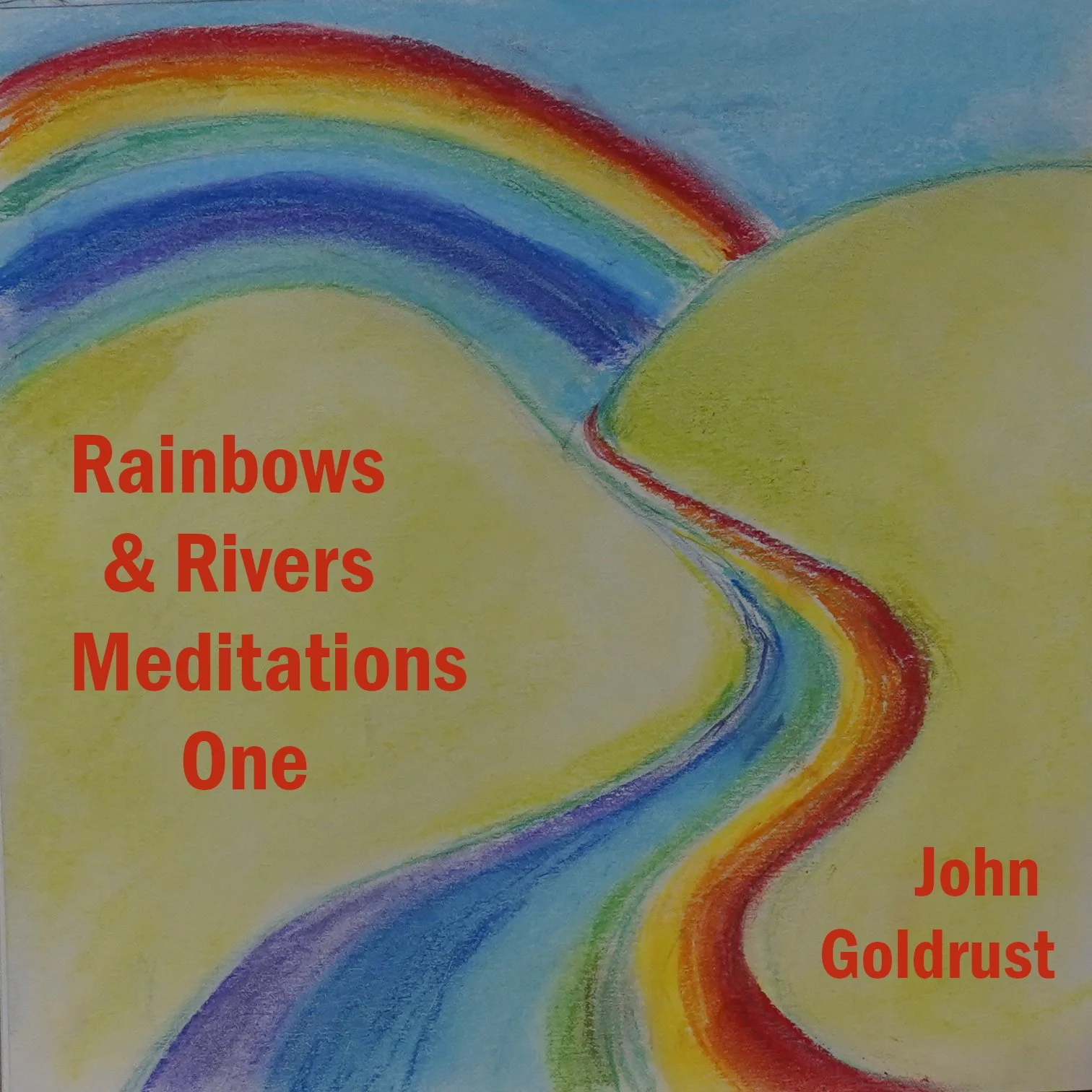John Goldrust’s Groundbreaking Instrumental ‘Rainbows & Rivers Meditations One’ - A New Theory Of Music
John Goldrust, a pre-eminent Songwriter and Producer from Oxford, is unleashing ‘Rainbows & Rivers Meditations One’ this week - the first Instrumental to be released from his cutting edge series ‘Rainbows & Rivers’, planned to be rolled out as a series of groundbreaking Instrumentals from 2025.
Each Studio Instrumental will have an accompanying Live Version.
The compositions of the ‘Rainbows & Rivers’ series are an expression of John Goldrust's research into the nature of music theory, especially from a mathematical point of view, similar to Bach's approach to music composition.
As with all John Goldrust's Songs and Instrumentals, 'Rainbows & Rivers Meditations One' attempts to venture into previously undiscovered territories. Although ambitious, this is partly based on the simple idea of trying not to 're-invent the wheel'. Although references are made to prior influences, if too similar to previously written material, another path is taken in the creative process.
'Rainbows and Rivers' takes this one step further, into the underlying theory of music itself. In attempting to compose music of a type not heard before, Goldrust suggests new doorways in human evolutionary consciousness might open, at a time when the world needs it most.
This composition began life as an abstract template, based on a new music theory and was first expressed, in terms of an actual piece of music, by a classical-style piano composition. Believing Piano strongest as an accompanying instrument, Goldrust didn't feel the lead part was best played on piano, unless arranged entirely as a solo piano piece. To begin with, Pianists more competent than John were approached for the task, but none were available at short notice, so it was decided to keep the piano as an accompaniment, while performing the lead part on Electric Guitar.
While Lead Guitar solos are often constructed from riffs which lend themselves to ease of playing on the instrument itself, the original melody was composed on piano and so was recorded on guitar in sections, each one constituting an original guitar riff.
Goldrust decided early in the recording process to record the piece in the traditional and outmoded frequency of 432 Hz, thought to be more organic to the human ear, while most modern music tunes the piano to 440 Hz for the value of note A above middle C. This threw the tuning of the Piano voice on Logic Pro X, the DAW Goldrust used to record and produce the piece, seemingly out of tune, so the Piano had to be retuned on a note-for-note basis. Since Plugin sample packs, such as by Native Instruments, don't allow for this fine tuning facility, the inbuilt samples of Logic Pro X were used for Piano and Orchestral Strings and the Guitar was re-tuned on a string-by-string and riff-by-riff basis.
Interestingly, the music theory with which music is written today, was developed mostly by composers who lived around 300 years ago, building on Gregorian chants written before 1200 A.D. and dating back to before 800 A.D. This theory of music has been pushed to it's limits by Jazz and Classical composers of the 20th Century and today almost nothing in music cannot be explained by some aspect of this resulting theory. However, merely having an answer for everything, based on an eclectic set of rules, does not in itself prove it's veracity. Originally based on aesthetics, pattern recognition and trial and error, music theory as it exists today lacks a degree of integrity and a genuine understanding of the substance of music. As such, although the theory may suggest possibilities and give options to composers and improvisers, it ultimately imposes it's own constraints, perhaps not inherent to the nature of music that music might otherwise have. Since music is a language and language is central to consciousness, these limits may also be constraining the evolution of human consciousness. Goldrust hopes that by liberating music from these constraints, we may also liberate human consciousness.
Biography
Goldrust played in several bands at school and university, which shaped his Rock-based sound and encouraged him to start writing songs at 16.
During the second half of his time at university, Goldrust discovered Electronic Dance Music, as well as the clubbing and free party scene, in Manchester and Oxford. He began DJing, writing Dance Music and soon after, made his first attempts at Dance Music production.
Following studying maths at university, initial efforts to form a rock band in Manchester with a friend, quickly morphed into joining that friend in the forming of a Trance and Hard House sound system based in Oxford. In this context, he continued to develop his skills as a DJ and music producer, while also writing rock-based songs and making plans to form his own band. Initial ideas began to emerge of a new theory of music and the first stages of development were laid down - it would be several years before the system was completed. At around this time, John recorded his first solo album, ‘Album One Unplugged’, which was released locally to friends and family. Subsequently ‘The Karmic Submission Hold’ or ‘KSH’ was formed and a studio EP was recorded, but soon after the band disintegrated into several other band projects.
Goldrust then moved to Brighton and the South Coast to work as a Sales Team Leader while focusing on his solo music project, before returning to Oxford to form the band ‘Pulsar’, which played several gigs in Oxford, eventually disbanding.
It was at this point Goldrust began developing his skills as a Rock Music producer in earnest and set up a home recording studio, as well as collaborating with a Dance Music producer. The Electronic ‘Happy By Design E.P.’ was recorded, as well as several prototype productions of Goldrust’s rock-based songs.
Goldrust’s production skills had finally come of age when he collaborated with several Jazz-Funk and Reggae musicians from an Oxford-based Reggae band called Mackating, that Goldrust was closely connected with and which by then had disbanded. The result was Goldrust’s first official release ‘When Said Is Done’, recorded and produced in his garden recording studio. The track featured I-Lodica, a well known British Reggae Artist on Vocals and Melodica, who also played on the following release ‘Like A Phoenix From A Fire’, along with a founding member of KSH on Percussion, Dan Glazebrook.
After this, the ‘Happy By Design E.P.’ was released, before Goldrust took a break from promotion to complete his second album ‘Travellers In Timing’. While promoting Single releases from this album, circumstances led to the launch of the ‘Rainbows & Rivers’ series to run concurrently
Music Links:
Rainbows & Rivers Meditations One (Studio Version) - Soundcloud
Rainbows & Rivers Meditations One (Studio Version) - Apple Music
Rainbows & Rivers Meditations One (Studio Version) - Spotify
Social Media Profile Links:
https://on.soundcloud.com/V7Kmg
https://www.tiktok.com/@john.goldrust
https://www.facebook.com/JohnGoldrust2000
https://www.johngoldrust2000.com
Press Coverage Links:
Earmilk review of ‘When Said Is Done’


